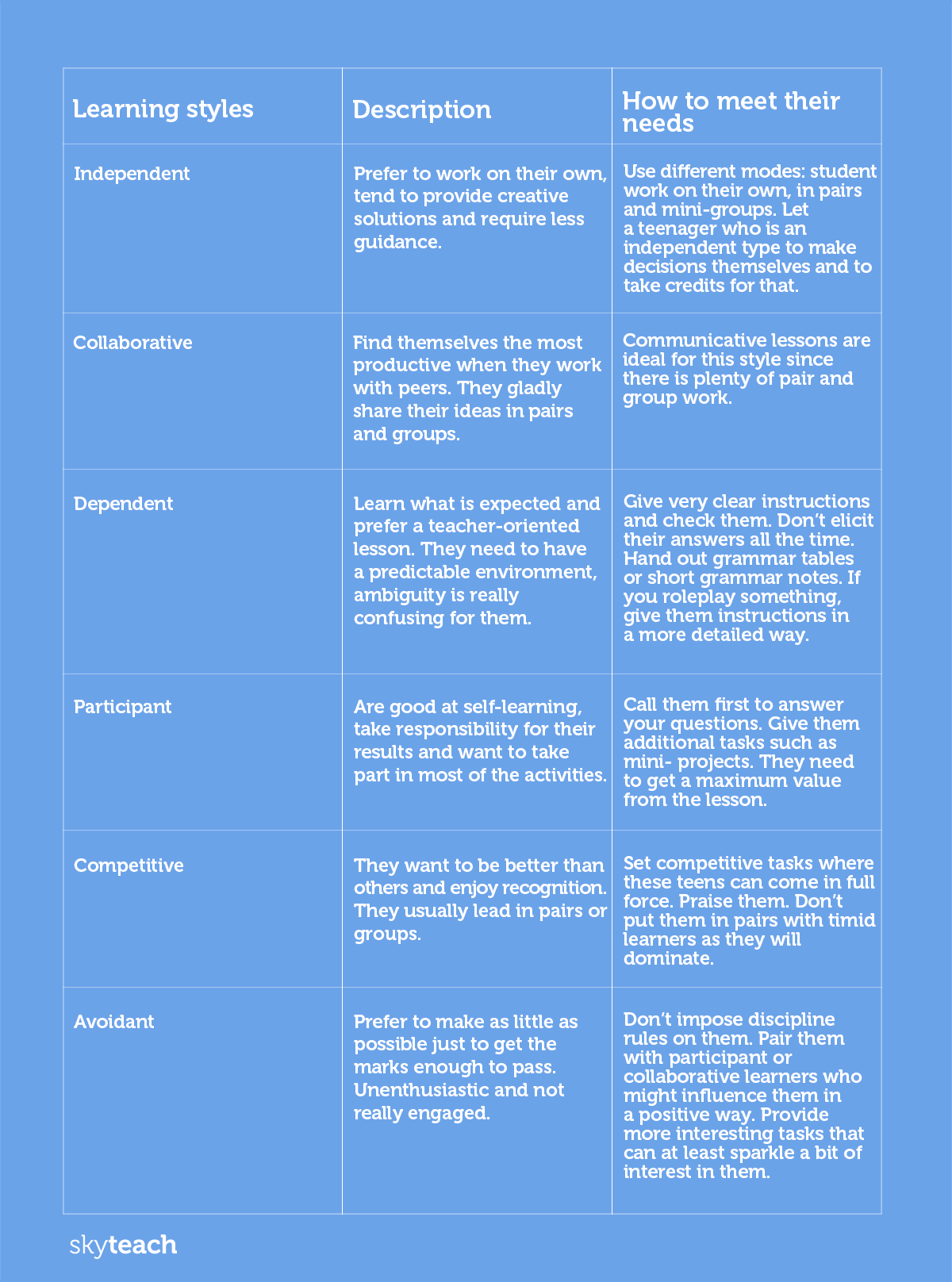As we know, not all lessons with teens run smoothly. The teacher is perfectly prepared but some learners don’t do what is expected. For example, instead of working in mini-groups, they google something on their smartphones, take refuge in silence while others are sharing their ideas or hardly bear the pain of writing. What motives stand behind such behaviour: a lack of motivation or a learner style?
Each of us has their own learning style that is the way we prefer to learn and do that in the most effective way.
Although teachers can’t tailor the program to every teenager if there are twenty or even thirty of them in class, knowledge of different learning strategies explains what triggers such behaviour and helps to deal with it.
Here is a basic overview of learners’ styles and strategies.
One of the most accepted theories of styles is the VARK model by Neil Fleming (1987) based on the sensory channels. According to these modalities, learners fall into four categories:
- visual
- auditory
- read/write
- kinesthetic
What can we do to personalize lessons for VARK teens?
Even if you fail to define learning styles, you can always use a variety of different tasks in one lesson to fulfill the needs of every student:
- visual tasks, for example, a picture description or a picture dictation.
- auditory exercises, for example, a dictogloss or listen and spot the mistakes.
- read/write tasks, for example, text-based language input and engaging writing tasks for teens such as text messages, posts for social networks.
- kinesthetic activities, for example, cards to match or mingle activities.
There are a number of cognitive theories including Anthony Grasha and Sheryl Riechmann (1974). They formulated the Grasha-Reichmann Learning Style Scale. According to this theory, students can be:

Another example of learning strategies was provided by Keith Willing (1987):
- Convergers are pragmatic, independent and confident in their abilities. They are like the independent type in the table above.
- Conformists are good at following instructions and do what they are told without displaying too much initiative. They are similar to the dependent style.
- Concrete learners like to learn from direct experience. They are pragmatic and value the practical use of language. They eagerly participate in group work. The teacher can emphasize how studied material can help them in real life and focus more on practice.
- Communicative learners are ‘ideal’ for the communicative approach environment. They are happy to interact with other students and like to analyzing the language with some guidance from the teacher (guided discovery). They tend to do extra work out of class like chatting in English with peers.
How to define your learners’ style?
First of all, observation is the simplest way to categorize your teens. You can also offer them to do a quiz in your very first lesson. Here you can test your teens according to VARK model. This test (though quite expansive) can help you to identify your students according to the Grasha-Reichmann Learning Style Scale. No worries if you can’t define the styles clearly since some learners are mixed types.






 Вероника Аветисян
Вероника Аветисян 
 Маргарита Аветисян
Маргарита Аветисян 


